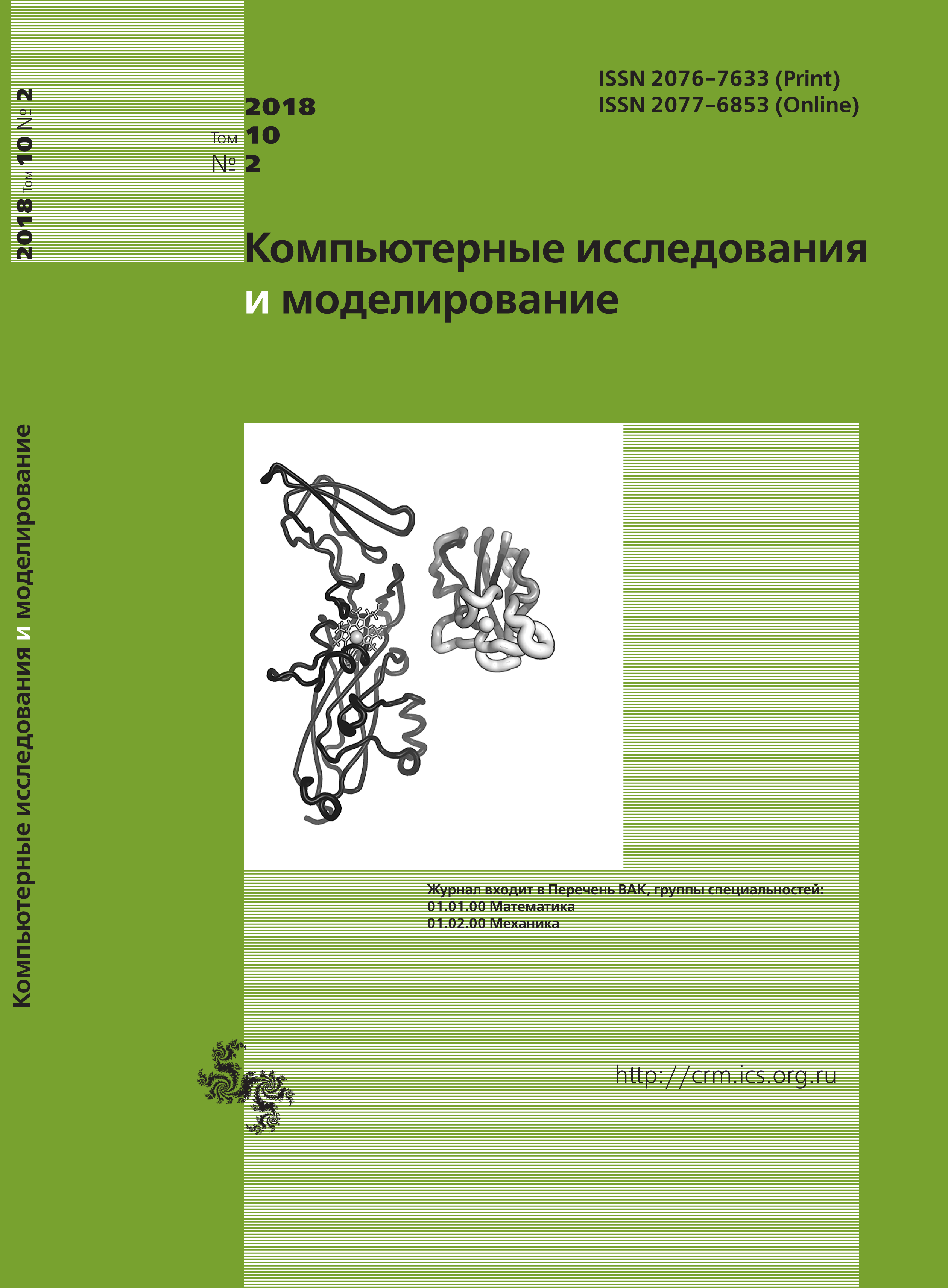All issues
- 2024 Vol. 16
- Issue 1 (special issue)
- 2023 Vol. 15
- 2022 Vol. 14
- 2021 Vol. 13
- 2020 Vol. 12
- 2019 Vol. 11
- 2018 Vol. 10
- 2017 Vol. 9
- 2016 Vol. 8
- 2015 Vol. 7
- 2014 Vol. 6
- 2013 Vol. 5
- 2012 Vol. 4
- 2011 Vol. 3
- 2010 Vol. 2
- 2009 Vol. 1
Simulation of convective-radiative heat transfer in a differentially heated rotating cavity
Mathematical simulation of unsteady natural convection and thermal surface radiation within a rotating square enclosure was performed. The considered domain of interest had two isothermal opposite walls subjected to constant low and high temperatures, while other walls are adiabatic. The walls were diffuse and gray. The considered cavity rotated with constant angular velocity relative to the axis that was perpendicular to the cavity and crossed the cavity in the center. Mathematical model, formulated in dimensionless transformed variables “stream function – vorticity” using the Boussinesq approximation and diathermic approach for the medium, was performed numerically using the finite difference method. The vorticity dispersion equation and energy equation were solved using locally one-dimensional Samarskii scheme. The diffusive terms were approximated by central differences, while the convective terms were approximated using monotonic Samarskii scheme. The difference equations were solved by the Thomas algorithm. The approximated Poisson equation for the stream function was solved by successive over-relaxation method. Optimal value of the relaxation parameter was found on the basis of computational experiments. Radiative heat transfer was analyzed using the net-radiation method in Poljak approach. The developed computational code was tested using the grid independence analysis and experimental and numerical results for the model problem.
Numerical analysis of unsteady natural convection and thermal surface radiation within the rotating enclosure was performed for the following parameters: Ra = 103–106, Ta = 0–105, Pr = 0.7, ε = 0–0.9. All distributions were obtained for the twentieth complete revolution when one can find the periodic behavior of flow and heat transfer. As a result we revealed that at low angular velocity the convective flow can intensify but the following growth of angular velocity leads to suppression of the convective flow. The radiative Nusselt number changes weakly with the Taylor number.
Indexed in Scopus
Full-text version of the journal is also available on the web site of the scientific electronic library eLIBRARY.RU
The journal is included in the Russian Science Citation Index
The journal is included in the RSCI
International Interdisciplinary Conference "Mathematics. Computing. Education"







